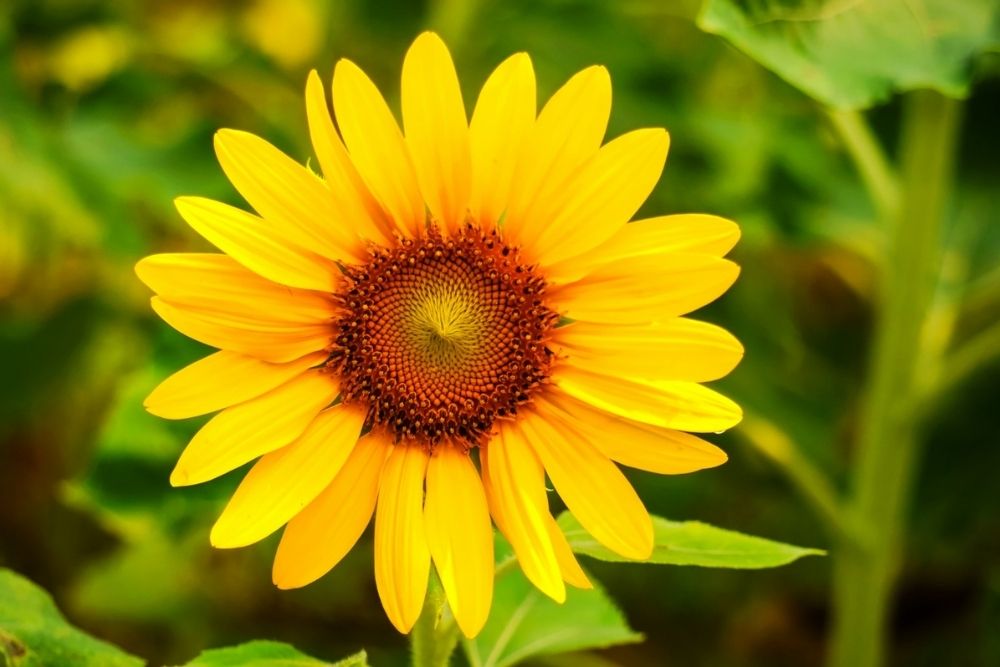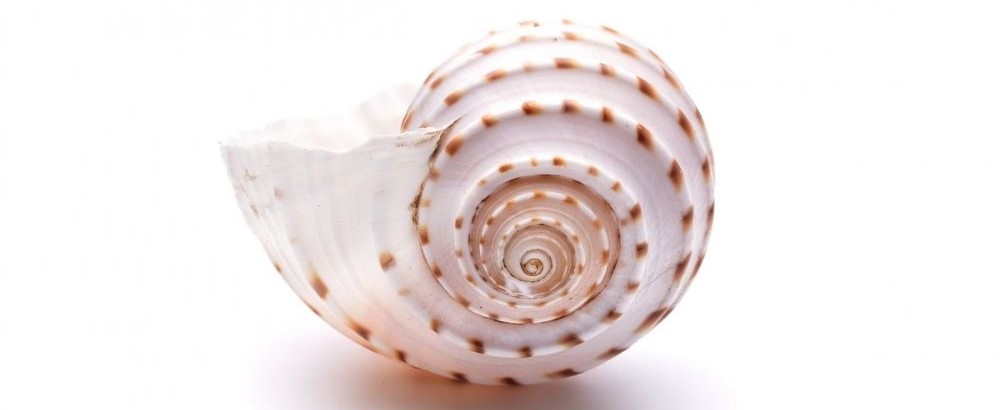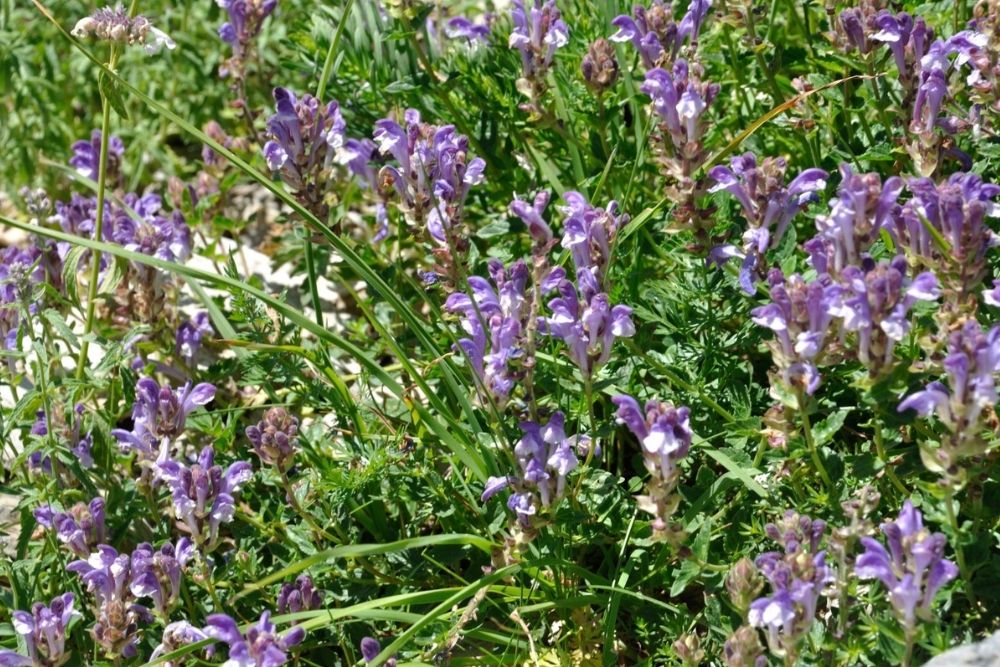Did You Know?
Research shows that people who are more connected with nature are usually happier in life and more likely to report feeling their lives are worthwhile. Nature can generate a multitude of positive emotions, such as calmness, joy, creativity and can facilitate concentration.

Sacred Geometry: Understanding the Interconnectedness of Nature and Health
From the tiniest of microscopic organisms to the complexity of larger life forms and the vastness of the cosmos, in nature there exists a repetition of shapes, structures, and patterns. These geometric archetypes, known throughout the ages as Sacred Geometry, are found in chemistry, physics, mathematics, physiology, and even in art and music. Perhaps you have heard of Sacred Geometry or maybe this is your first encounter with the concept. Regardless of your knowledge or experience, you may find the ideas about Sacred Geometry interesting and entertaining to ponder in view of the interconnectedness of nature and health. So let’s enlighten our perspective to see what Sacred Geometry is all about and how it may enrich our lives.
Geometry: A Quick Review

Think back to when you first learned about geometry. You probably learned that geometry is the mathematical expression of relationships between points, lines, angles, surfaces, solids, and multi-dimensional objects. You may also know that geometry provides a foundation (or framework) for building things.
Just as humans use geometry as the mathematical foundation for building things, so does nature. You wouldn’t look at a door frame and say “that’s the whole of the house,” and you cannot claim a house is whole without the doors in place. In nature and health, geometry similarly shows us how the parts of a structure are connected to the whole structure: the cells that build up into organs, and then systems, and then a whole human being (or tree, or flower, or mountain lion).
Sacred Geometry, then, can be thought of as the mathematical framework that exists throughout nature–including health. This framework is built from a set of foundational geometric shapes that give rise to increasingly complex patterns. Sacred Geometry gives us a visual and mathematical language for understanding the relationship between the parts and the whole of something in nature – from molecular structures and tiny organisms the naked eye can’t see to the complexity of the human body and the cosmos.
Where did Sacred Geometry Come From?
Throughout history and across many different cultures and religions (Greek, Egyptian, Asian, Hindu, and Christian to name a few), shapes, symbols and patterns have been apparent not only in carvings and buildings, but also in spiritual and academic teachings, art, and music. The identification of these patterns in nature brought forth the ideas behind Sacred Geometry.
What are the Foundational Shapes?
The foundational shapes of Sacred Geometry are considered “building blocks” for more complex and intricate shapes and patterns. The basic building blocks are:
- Triangle
- Circle
- Square
- Spiral
When the foundational shapes repeat in a sequence, they form more intricate shapes and patterns, including multidimensional objects. The Fibonacci Sequence is a repeating sequence of numbers that, when represented geometrically, forms a spiral pattern that appears in numerous biological objects (flower petals, fruits and vegetables, tree branches, spiral galaxies and a multitude of others).

Sacred Geometry and the Human Body
The DNA spiral, the structure of chemical compounds, the pattern of movement of muscle contractions–these and many other functions within the human body can be viewed through the lens of Sacred Geometry. When all physiological systems and structures are in proper alignment and balance, the body functions optimally. It is more efficient. It is more resilient. It is strong and pliable. The body’s innate power to heal is more accessible.

How can Sacred Geometry Support Balanced Health?
We understand from advanced physics and mathematics that objects in the universe hold energy and are in varying states of energetic vibration. Even our senses are attuned to these vibrations. (A simple example is hearing, which responds to vibrations carried by sound waves).
It is thought that each geometric shape holds a specific energy or vibration. By surrounding yourself with these “sacred shapes,” you can create space for rebalancing and healing that is in tune with the vibrations of the natural world.
Sacred Geometry can be used as a mindfulness tool in many different ways. Begin by selecting geometrically shaped objects that resonate with you. These can be in the form of jewelry, picture frames, candles, yoga poses, and artwork among other things you might find appealing. Next, find a way of using the object during any of the following practices:
- During body work (acupuncture, massage therapy)
- During meditation
- While practicing yoga
- Walking meditation (a labyrinth, corn maze, city streets)
- Dancing a specific pattern
- Drawing and coloring patterns such as Mandalas
- Decorating your home or an altar space
- Wearing the object or carrying it with you
Click here for RESOURCES to explore this topic further.

Oh, Green Eggs and OKRA!
Okra is generally thought of as a “regional vegetable.” Often popularized in depiction of the American South, okra has been traditionally served steaming hot, straight from the frying pan. In recent years, okra has made its way into gourmet recipes and establishments for bringing a unique texture, appearance, and flavor profile to a variety of cuisines. Okra’s abundant health benefits, particularly for gut health and immunity, have added to its appeal.
Okra is a green flowering plant with edible seed pods. When cooked, okra has a mild earthy flavor that acquires depth and crispness the longer the cooking time. It is versatile enough to use in many types of dishes–from eggs to soup–and with different cooking methods including baking, roasting, sauteing, and stir-frying.
Rich in nutrients such as vitamin A, antioxidants, fiber, calcium, and iron, okra has many health benefits when included as a regular part of a healthy diet:
Support for Gut Health. The fiber in okra helps support healthy digestion and movement of the bowels. The unique slippery texture that okra takes on as it cooks has been found to nourish the lining of the gut. A bonus for people who have IBS is that okra, unlike other cruciferous veggies, does not contain fermentable fiber which aggravates IBS.
Support for the Immune System. One cup of okra contains nearly a daily serving of vitamin A, which is an essential nutrient for a strong immune system. Vitamin C is also found in okra. Just keep in mind that cooking at a high heat can deplete the vitamin C content.
Support for Detoxification. The antioxidants found in okra support the body’s natural detoxification. By filling up on okra and other foods high in antioxidants, you are helping to protect your body from toxins that damage cells and cause inflammaiton.
If you’ve hesitated to try okra, explore the many ways to prepare it and season it! You might find you like it!

Fantastic Five-Ingredient Chinese Stir-Fry, featuring Okra!
In this recipe, the okra is quickly cooked in a peppercorn and chili pepper-infused hot oil until slightly charred on the outside. This method yields a savory, smoky and spicy flavor that renders an authentic Chinese stir-fry experience.
Preparation Tip: The key to preparing this dish lies in intensifying the flavor using a technique called “qiang guo” (炝锅, means ‘to choke the wok’). You will add pungent spices and herbs to hot oil before cooking, which infuses the oil with a wonderful flavor and aroma.
Ingredients
- 10 (7 oz) okra, chopped
- 1 tsp Sichuan peppercorn
- 2 dried chili peppers
- 1Tbsp peanut oil (or vegetable oil)
- 2 tsp light soy sauce (or tamari for gluten-free)
Preparation
- Heat oil in a wok (or nonstick skillet) over medium heat until warm. Add Sichuan peppercorn and cook until fragrant and dark, about 1 minute. Turn to lowest heat and use a spatula (or ladle) to scoop out the peppercorns and discard them.
- Break chili peppers into 2 to 3 parts and add them into the skillet. Stir a few times.
- Turn to medium heat (high heat if using an electric stove) and add the okra to the skillet. Stir quickly to coat okra with oil, about 1 minute. Swirl in the soy sauce and stir to mix well.
- Cook and stir until the okra is cooked through and charred on the edges, 2 to 3 minutes. If the skillet starts to smoke intensely, lower to medium heat during stir-frying. If you can’t hear the vibrant sizzling, turn back to high heat. Transfer to a plate and serve warm.

Skullcap Herb Soothes Tension and Supports Wellness
Grown in meadows and wetland habitats, skullcap herb has been used in traditional herbal medicine to instill a sense of gentle calm. One of the most versatile herbs, skullcap also is used in holistic practices to help quell anxiety, calm symptoms of neuropathy, decrease inflammation, soothe irritability, and relieve headaches and tension.
There are two forms of skullcap and each is used differently:
The root of Chinese Skullcap (Scutellaria baicalensis) has been used in traditional medicine to treat infections, allergies, headaches, IBS, leaky gut, and even some cancers. Scientists are exploring other properties of Chinese Skullcap, including antiviral and antifungal.
The leaves of American Skullcap (Scutellaria lateriflora) are commonly used to address symptoms of neuropathy and nerve pain. Studies show American Skullcap has significant antioxidant effects, and may help protect against neurological disorders, such as Alzheimer’s disease, Parkinson’s disease, anxiety, and depression. It may be found in dried formulas in a capsule, tea, or prepared as a tincture. It is often combined with other herbs, such as Valerian Root, that help to balance mood and soothe nervous tension.
As with many nutritional and botanical supplements, skullcap can interact with and change the effects of other herbs, supplements, or medications. Many herbs are not indicated to be used during pregnancy or while breastfeeding. Chinese Skullcap should not be taken by persons with diabetes. For these reasons, you should take herbs with great care and while under the supervision of a qualified holistic healthcare provider.

Every Body Needs Trace Minerals
Minerals are required by every cell in your body, which means everyone regardless of age needs them. Your body, however, cannot make minerals so it must obtain them from the food or water you consume. Minerals are broken into two categories: macrominerals and trace minerals. Macrominerals are much easier to acquire from food while trace minerals are found in more select sources. Let’s find out how you can meet the mineral requirements your body needs to function at its best.
Macrominerals such as calcium, potassium and magnesium, are fairly easy to get from a robust diet. Many foods (fruits, vegetables, fish, poultry and meat) contain different macrominerals and in varying amounts.
Trace minerals, such as copper, selenium, and manganese, are compounds that the body needs in much smaller amounts and are essential to a variety of cellular functions.
The US Department of Agriculture and other science organizations report there is instability in the quantities of minerals, particularly trace minerals, found in food. This is especially true of food products that are not grown in organic soil and free from harmful chemicals or GMOs.
Since trace minerals are less abundant in the foods we eat, it’s harder for us to get what we need through diet alone. To make things more challenging, many vitamin-mineral formulas do not include trace minerals (only the macrominerals).
These challenges can lead to a trace mineral deficiency. Signs of a mineral deficiency can show-up in your physical health in a variety of ways, such as:
- GI issues (constipation, bloating, diarrhea)
- Lower immunity
- Problems with memory, learning, brain fog
- Muscle pain, spasm, cramps
- Heart issues
- Generalized weakness or fatigue
- Developmental delays or behavioral issues
If you experience any of the symptoms above, your holistic healthcare practitioner can run a lab test to assess for a mineral deficiency and may recommend ways to help boost your macromineral and trace mineral intake.
For minerals in general, eat a healthy diet consisting of non-processed food (particularly locally raised, organic food), especially dark leafy greens, vegetables, fruit, nuts, legumes, and lean proteins. For trace minerals, the best source comes from the mineral-rich waters found in certain oceans and seas around the globe such as the Great Salt Lake and the Australian Ocean. Nutritional supplements derived from these mineral-rich waters can boost your trace mineral levels. Your holistic healthcare practitioner can guide you regarding the best macromineral and trace mineral supplements to fit your specific needs.

Lotus Pose: Grounding and Expansion for Mind-Body-Spirit
One of the oldest of the ancient yoga poses, Lotus Pose (Padmasana) is a cross-legged sitting meditation pose. To understand the significance of the Lotus Pose for mind-body-spirit, it helps to learn about the namesake for this pose: the beautiful Lotus flower plant.
Rooted in mud, the majestic Lotus flower begins as a seed then a bulb (or pod) that sprouts shallow roots as the flower grows into bloom. A living fossil in existence for over 140 million years, the Lotus flower can withstand the extremes of hot and cold temperatures (it survived the Ice Age!), so long as it’s roots remain in mud. Lotus flowers are known to be resistant to pollution and able to purify the water in which they grow, completely embracing even the most unfavorable environmental conditions. Each night the Lotus submerges into murky water. Each morning it reblooms (like a rebirth) without residue from previous environmental exposure.
Sitting in Lotus Pose, we are reminded that the “mud and murky water” of life is necessary to our human experience. From the mud, we can grow and blossom with our petals open to experience, open to receive and to give, as we grow towards Enlightenment.
Practicing Stillness and Presence in Lotus Pose
Before you move into Lotus Pose, it is a good idea to warm-up the muscles and joints. A few minutes of walking, easy knee bends, holding a plank pose, or a few standing balance poses can help still the mind and warm the body. This is important because your knees will be bent and the hips flexed while in Lotus Pose; you don’t want to enter the pose with stiff legs and hips.
Scroll through this page to see how to modify Lotus Pose for your needs.
In Lotus Pose, each leg folds at the knee and criss-crosses one foot to the opposite thigh. The hands may rest on either knee, palms down or palms up and open. Alternatively, the hands may rest at the heart center or cupped together (palms up and open) in the space between the thighs. The spine is held long and tall from the tailbone to the top of the skull. Shoulders are relaxed. The belly is held in gently. A cushion can be placed beneath your sitz bones for support.
When you begin practicing Lotus Pose for meditation/relaxation, you may feel uncertain and your thoughts may race. In essence, you are in the murky, muddy water and trying to find your way. As you practice, things become more natural, your mind starts to quiet, and your experience begins to shift.
Lotus Pose is considered both a grounding and expansive pose. Your legs are the roots, grounded (or perhaps tangled) beneath you and weighed down in the mud (as your thoughts may be). As you focus on the movement of your breath, your body lifts and lightens. With practice, you blossom not only physically but also emotionally and spiritually.
Through this interplay of grounding and expansion, Lotus Pose can help improve circulation in the lumbar spine, stretch the ankles and legs, and increase flexibility in the hips. In Lotus Pose, you disengage the body from the stress response and nourish the systems that support relaxation (lowering blood pressure and encouraging deeper, more nourishing respiration). Lotus Pose fosters self-awareness and non-judgemental self-acceptance.
As with any new exercise, if you experience pain or discomfort, please bring that to the attention of your healthcare provider.
The information offered by this newsletter is presented for educational purposes. Nothing contained within should be construed as nor is intended to be used for medical diagnosis or treatment. This information should not be used in place of the advice of your physician or other qualified health care provider. Always consult with your physician or other qualified health care provider before embarking on a new treatment, diet or fitness program. You should never disregard medical advice or delay in seeking it because of any information contained within this newsletter.
